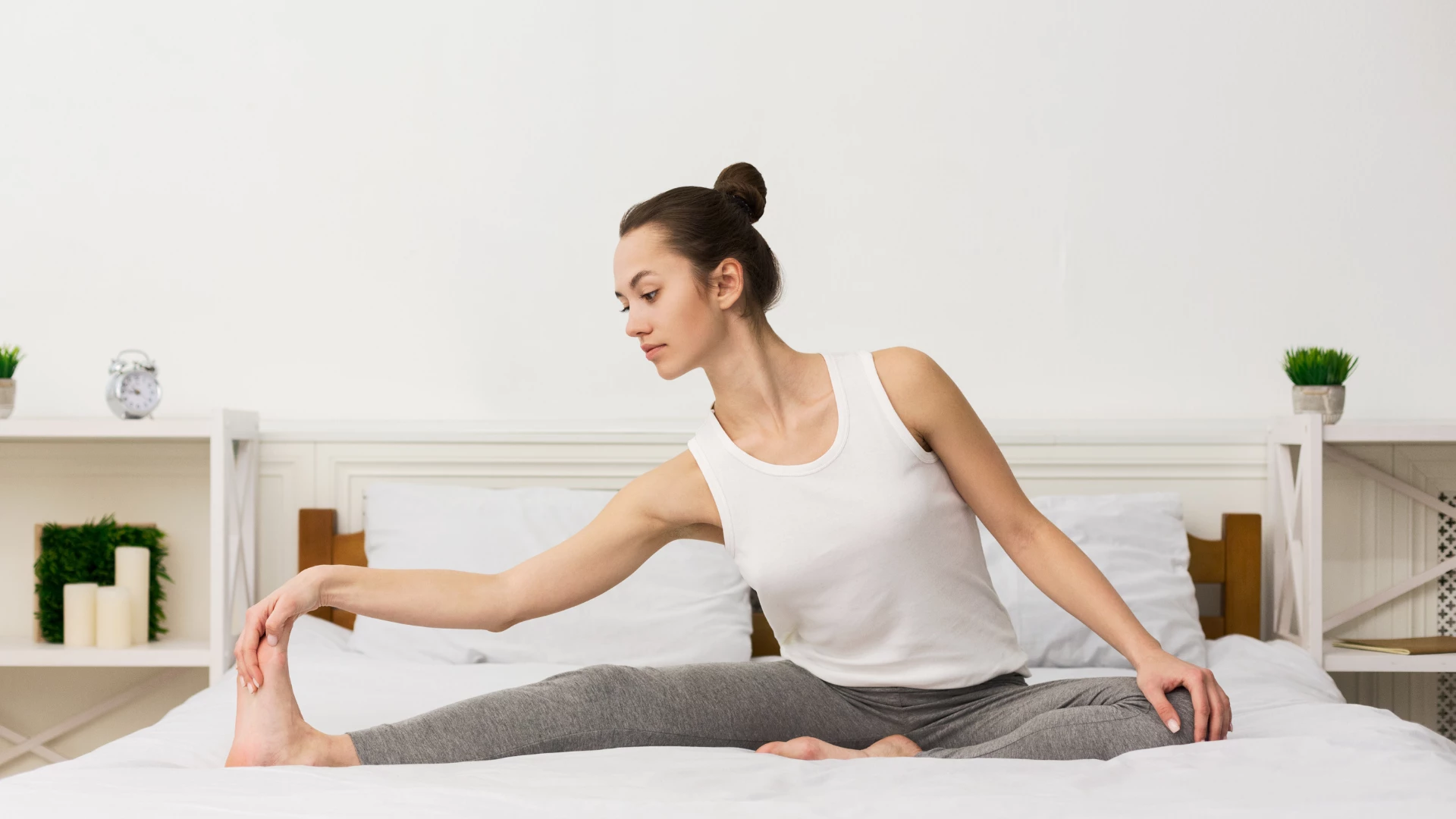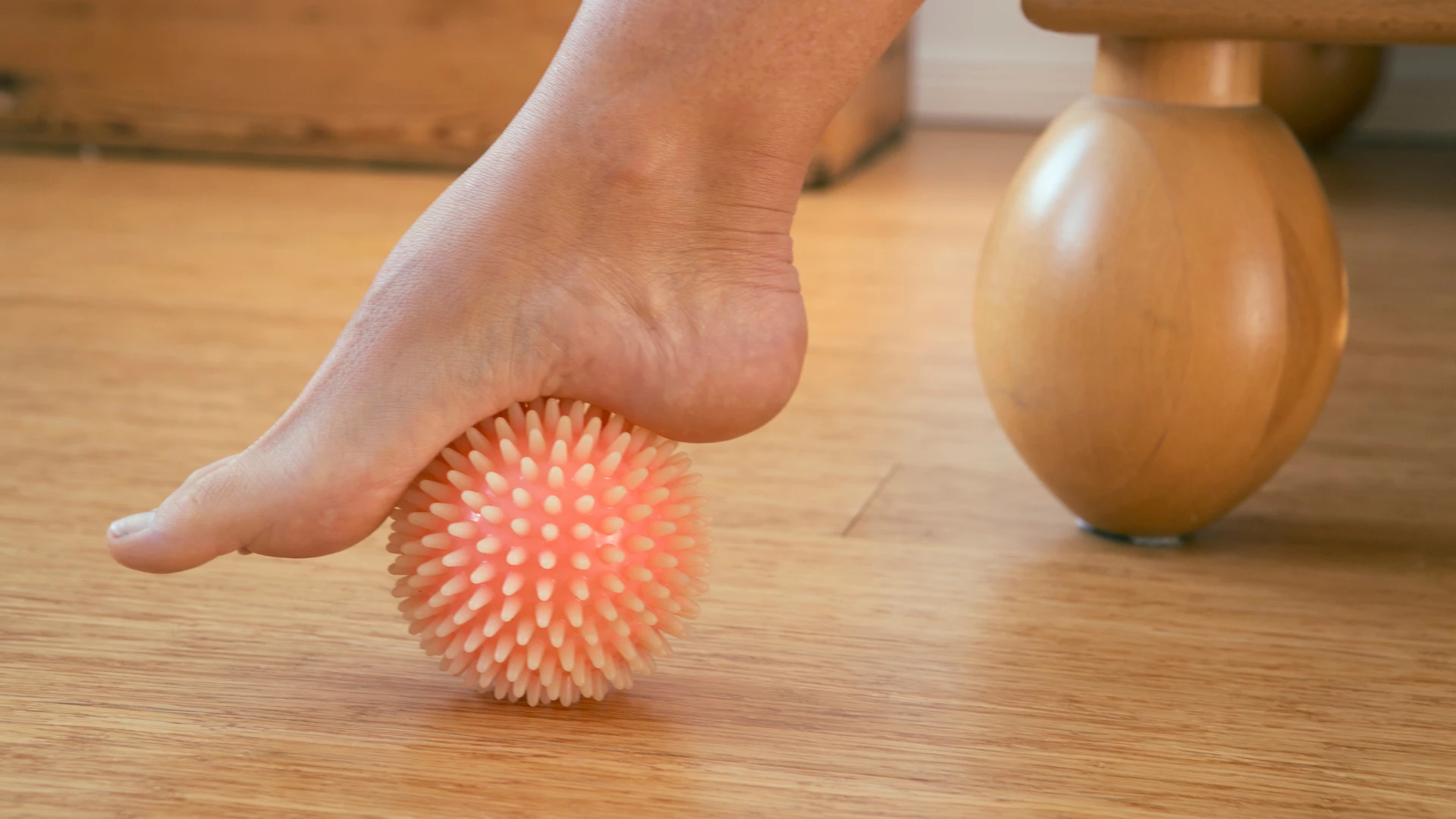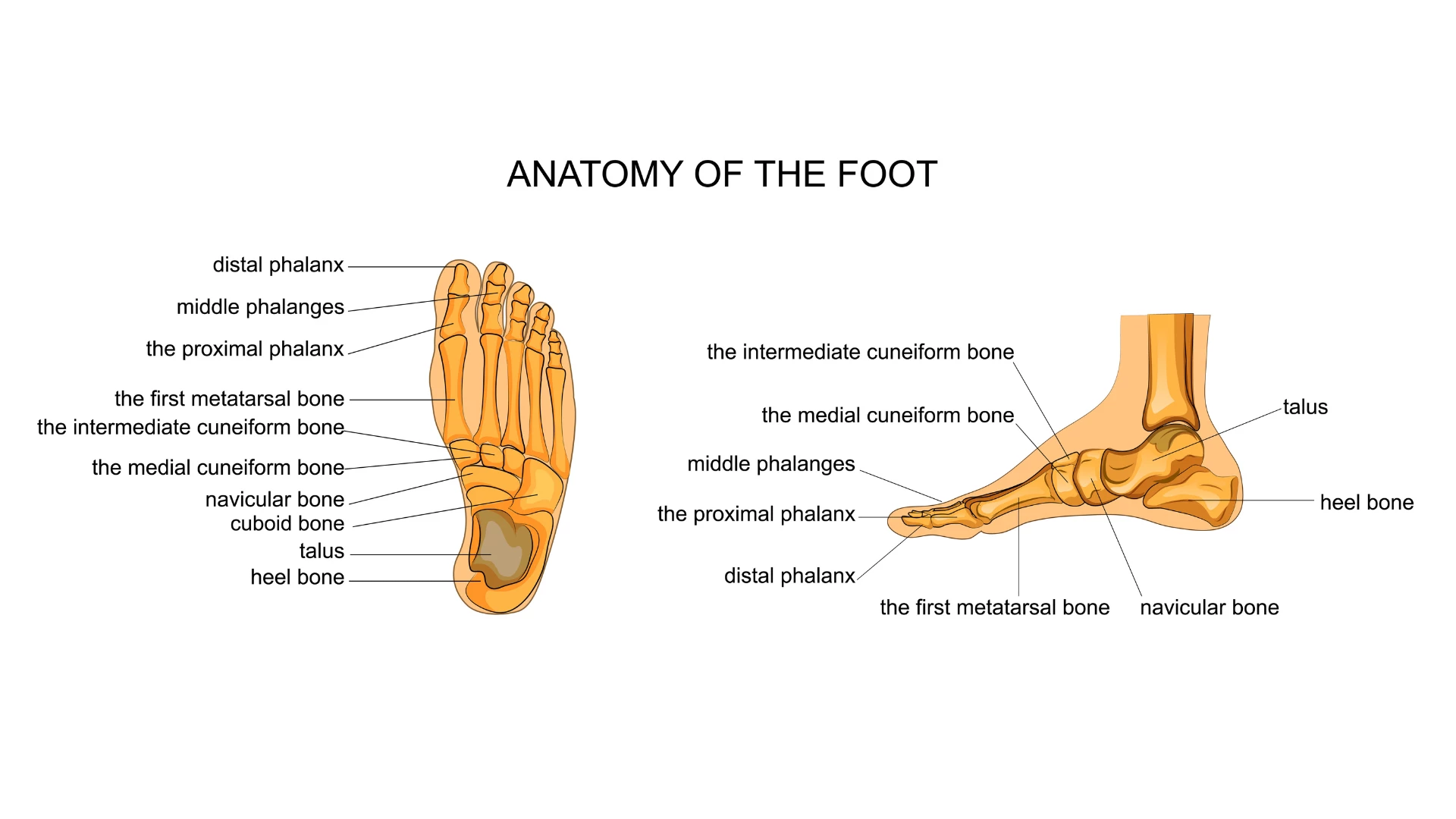3 Release Techniques to Improve Ankle Mobility

Article At A Glance
Do your ankles and calves feel tight? Try these three release techniques (videos included) designed to improve ankle mobility and flexibility, and for best results, include them in your regular exercise routine.
Mobility or flexibility in our joints is necessary for how we move dynamically and transfer energy when we walk, squat, or jump. Any limitation in the range of motion can lead to restricted movement, compensation patterns, and joint stress. As a podiatrist, the ankle is one of the most common joints where I see a restricted range of motion impacting movement. Several common causes of limited ankle mobility exist, from tight calves to flat feet. However, regardless of the cause, everyone can do a few things to improve ankle mobility and flexibility.
But before we jump into the recommended release techniques, let’s briefly review the movements of the ankle joint.
Anatomy: How Do Our Ankles Move?

The primary movements of the ankle are dorsiflexion and plantarflexion. Dorsiflexion occurs when the foot is flat on the ground, and the leg is shifting over the foot. We can observe this movement when we descend into a squat or sit down in a chair. A limitation in ankle dorsiflexion can cause overpronation and is the most common contributor to flat feet.
The opposite of ankle dorsiflexion is ankle plantarflexion. This is when the toes are moving away from the leg, such as when a dancer points their toes or when climbing stairs. The transition into ankle plantarflexion is how we release energy during dynamic movement and is often referred to as a position of power.
 Most of the restriction in the ankle occurs on the side of ankle dorsiflexion. Therefore, this article will focus on release techniques to improve ankle joint dorsiflexion.
Most of the restriction in the ankle occurs on the side of ankle dorsiflexion. Therefore, this article will focus on release techniques to improve ankle joint dorsiflexion.
Technique #1 to Improve Ankle Mobility: Plantar Foot Release
Releasing the plantar fascia on the bottom of the foot can improve ankle mobility as this tissue is actually connected to the calf muscles.
Using a lacrosse or golf ball, stand or roll the foot for at least 5 minutes twice daily. This is especially beneficial to those who stand on their feet all day.
Technique #2 to Improve Ankle Mobility: Soleus Release
The calves, found in the back of the leg, are made up of two muscles: the soleus and the gastrocnemius. Of the two, the lower muscle, or soleus, has a greater influence on ankle mobility, and therefore this second release technique will be on that muscle.
- Using a lacrosse ball or foam roller, release the soleus muscle for at least 2 to 3 minutes daily.
- Try to use a combination of pinpoint pressure and cross friction, and work all angles of the muscle.
Technique #3 to Improve Ankle Mobility: Hip Flexor Release
It may surprise some that I am including a hip flexor release for ankle mobility. However, our hip muscles can greatly influence our foot and ankle function.
- For this release, use a lacrosse ball or foam roller to address the upper quadriceps and hip flexor muscles.
- Try to release these muscles for at least 2 to 3 minutes every day, especially if you sit a lot throughout the day.
What To Do If You Need Additional Help
Although these release techniques do not address all causes of limited ankle mobility, they can benefit most people.
If you find that you are still experiencing a restriction in the ankle or have pain in your range of motion, I recommend that you see your local podiatrist for a more thorough evaluation.
Also, read...
Are You Making This Common Stretching Mistake in Yoga?
Dr. Ray Long: How to Enhance Your Breathing Capacity During Yoga
Yoga Anatomy: The Adductor Muscles in Downward Facing Dog Pose
Related courses
Breath as Medicine: Yogic Breathing for Vital Aging
Yoga and Myofascial Release: Releasing Chronic Tension with the Bodymind Ballwork Method

As a Podiatrist, Human Movement Specialist, and Global Leader in Barefoot Science and Rehabilitation, Dr. Splichal has developed a keen eye for movement dysfunction and neuromuscular control during gait.
Originally trained as a surgeon through Beth Israel Medical Center in New York City and Mt Vernon Hospital in Mt Vernon, NY, in 2017 Dr. Splichal put down her scalpel and shifted her practice to one that is built around functional and regenerative medicine.
Functional and regenerative medicine and the role of anti-aging science as it relates to movement longevity is where Dr. Splichal’s passion is focused. Currently enrolled in a Fellowship for Anti-Aging and Regenerative Medicine from the American Academy of Anti-Aging Medicine (A4M), Dr. Splichal’s recommendations typically include PRP or stem cell therapy, photomodulation or red light therapy, dry needling or acupuncture, vitamin supplementation, sensory stimulation of the nervous system, fascial work and integrated exercises.



